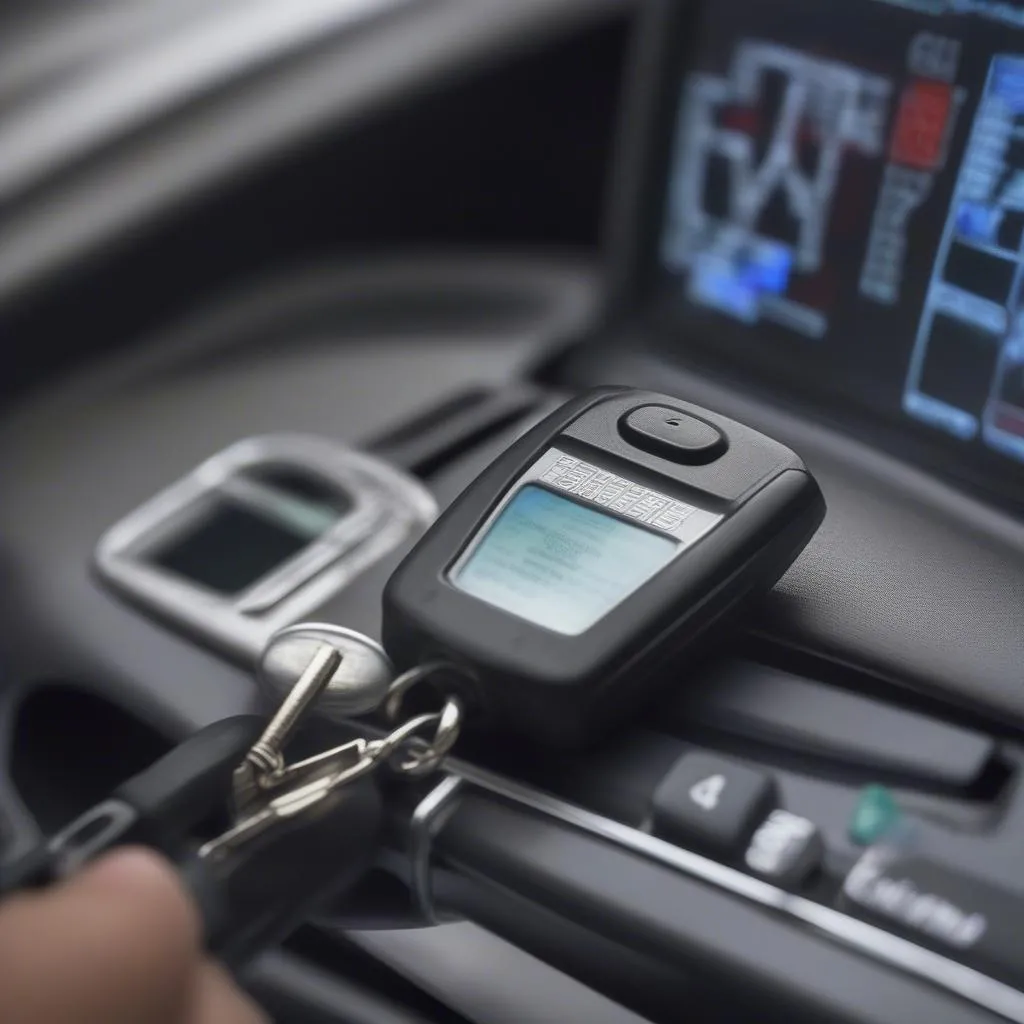A malfunctioning anti-theft system can be a major headache, leaving you stranded with a car that won’t start. While modern car security systems are essential for deterring theft, they can sometimes act up and prevent you from accessing your vehicle. Don’t panic! This comprehensive guide will walk you through the common causes, symptoms, and solutions for disabling a troublesome anti-theft system.
Understanding Your Car’s Anti-theft System
Before we dive into solutions, it’s helpful to understand how these systems work. Modern vehicles often employ various electronic components like:
- Immobilizers: These systems prevent the engine from starting without the presence of a coded signal from your key fob.
- Alarms: Triggered by unauthorized entry, alarms use sensors to detect intrusions and sound a loud siren to deter theft.
- GPS Tracking: Some systems use GPS to track your car’s location in case of theft, aiding in recovery.
Common Causes of Anti-theft System Malfunctions
Several factors can cause your anti-theft system to act up:
- Weak or Dead Key Fob Battery: A weak battery can disrupt the signal between your key fob and the car, causing the immobilizer to engage.
- Faulty Key Fob: Over time, key fobs can experience wear and tear, affecting their functionality.
- Malfunctioning Car Battery: A weak or dead car battery can interfere with the electrical systems, including the anti-theft system.
- Faulty Sensors: Door, hood, or trunk sensors can trigger the alarm system even when there’s no actual threat.
- Wiring Issues: Loose or damaged wiring can disrupt communication between system components.
Identifying an Anti-theft System Problem
Recognizing the signs of an anti-theft system malfunction is crucial for a quick resolution. Common symptoms include:
- Engine Cranks But Won’t Start: This often indicates an immobilizer issue preventing the engine from receiving the “go” signal.
- Rapid Flashing Dashboard Lights: A blinking security or immobilizer light usually points to an active anti-theft system.
- Alarm Goes Off Randomly: Faulty sensors or a system glitch can trigger false alarms.
- Car Remote Keyless Entry Not Working: A malfunctioning anti-theft system might disrupt key fob communication, affecting door locks.
Essential Tools for Troubleshooting
Before attempting any fix, gather the following:
- Your Car Manual: Contains valuable information specific to your car’s anti-theft system.
- Spare Key Fob: Useful for testing if the issue lies with the original key fob.
- Car Battery Charger: Ensures a stable power supply for resetting the system.
- OBD-II Scanner: A diagnostic tool that can read and clear error codes related to the anti-theft system.
Disabling the Anti-theft System
Important: Procedures for disabling anti-theft systems vary significantly between car makes and models. Always refer to your owner’s manual for specific instructions.
1. Check and Replace the Key Fob Battery
The simplest solution is often the most effective. Replace the key fob battery with a fresh one and try starting your car.
2. Reset the System Using Your Key
Some vehicles allow a manual reset using the key and ignition:
- Insert your key into the driver’s side door lock.
- Turn the key to the unlock position and hold it for 30 seconds.
- Repeat this process two more times.
- Attempt to start your vehicle.
3. Disconnect the Car Battery
Disconnecting the battery can sometimes reset the anti-theft system:
- Safety First: Disconnect the negative (black) terminal first, followed by the positive (red) terminal.
- Wait for 15-20 minutes to allow any residual power to dissipate.
- Reconnect the battery terminals, positive first, then negative.
Note: Disconnecting the battery might erase radio presets and other settings.
4. Use an OBD-II Scanner
An OBD-II scanner like those from Cardiagtech can help pinpoint the issue:
- Plug the scanner into your car’s OBD-II port (usually located under the dashboard).
- Turn the ignition to the “on” position without starting the engine.
- Read and note any error codes related to the anti-theft system.
- Consult your car manual or a trusted mechanic to interpret the codes and address the specific issue.
 Car OBD Scanner
Car OBD Scanner
When to Seek Professional Help
If the above steps don’t resolve the issue, it’s best to consult a qualified automotive electrician or your dealership’s service center. They have the expertise and specialized tools to diagnose and repair complex anti-theft system problems.
“Trying to bypass or tamper with the anti-theft system yourself can lead to further damage and void your warranty,” warns automotive electronics expert, Dr. Sarah Williams, author of “Modern Automotive Electronics Explained.” “It’s always best to leave complex electrical work to the professionals.”
Frequently Asked Questions
Q: Can a bad ignition switch cause anti-theft problems?
A: Yes, a faulty ignition switch can sometimes interfere with the anti-theft system, preventing the key from being recognized.
Q: Can extreme temperatures affect my car’s anti-theft system?
A: Yes, both very hot and very cold temperatures can affect the battery life of your key fob and potentially cause system malfunctions.
Q: I lost my only car key. What should I do?
A: Contact your dealership or a qualified locksmith. They can program a new key and synchronize it with your car’s anti-theft system.
 Car Key Programming
Car Key Programming
Need More Assistance?
We understand that dealing with a malfunctioning anti-theft system can be frustrating. If you’re still experiencing issues or have questions, don’t hesitate to reach out to CARDIAGTECH for expert advice and support. Our team of automotive diagnostic specialists is here to help you get back on the road safely.

